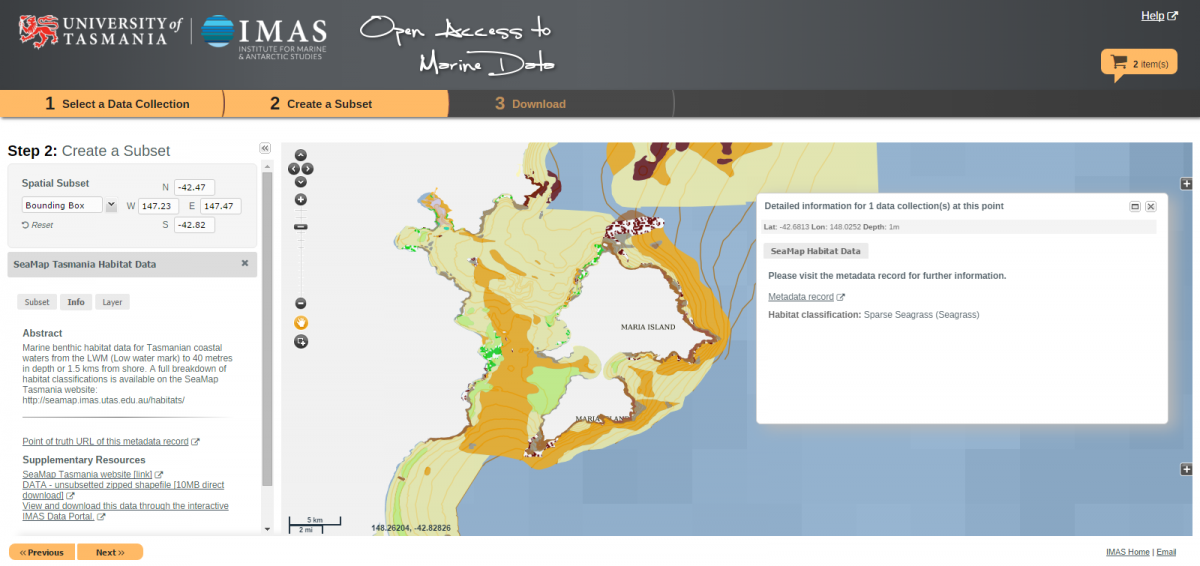
Soon after starting as data manager with IMAS, Emma Flukes experienced the proud moment of loading her own data onto the Australian Ocean Data Network (AODN).
"I was really excited to see how my data could be visualised," Emma says.
"The concept of routinely making data available for the public to explore was very appealing, and I hope more and more researchers will start to recognise the benefits of open data. I always like being involved in the new thing: at the cutting edge. Open data is gaining momentum so quickly and I'm really excited to be part of the movement."
Emma's data management responsibilities are now divided between IMAS and the Marine Biodiversity Hub, where she sees her role as smoothing the way between researchers and technical (data) specialists.
After auditing datasets from Hub projects, she will develop guidelines to help researchers publish their data through the AODN 1-2-3 Data Portal, an online interface that catalogues and visualises open-access data collected by the Australian marine community.
"Open data systems require some effort to get up and running, but once the wheels are turning they hugely decrease the overall effort that goes into collecting and showcasing data," Emma says.
"Open data enables a faster and more efficient path to scientific discovery, encourages collaboration, reduces duplication of research efforts, and can even boost citation rates. So I was really excited to start working with the Marine Biodiversity Hub which has the policy of making all its data publically available as quickly as possible."
"Another advantage is that researchers can keep track of who else is using their data, and this can lead to collaboration opportunities. Recent studies have shown that making data open access results in, on average, a 30% increase in citations of associated publications, in addition to direct data citations.
"In fact data themselves can now be cited. Datasets from Reef Life Survey – a global project supported by the Hub for its national work – were some of the first to be published, in the first edition of the Nature journal Scientific Data."
Emma approaches data management from the perspective of a community ecologist. Her PhD research looked at the effects of climate change on habitat-forming kelps and associated rocky reef communities, and she has also worked on the impacts of overgrazing by the long-spined sea urchin in south-eastern Australia. Now her fascination for ecology is fulfilled by serendipitous currents of open data.
"The AODN Data Portal can be searched using keywords, without the need to know a particular dataset exists, and third parties may use data in ways that, initially, were never envisaged," Emma says.
 "It's fascinating to see what kind of datasets are publicly available. The IMAS Data Portal hosts 170-year-old Port Arthur tide gauge records, 40 years of phytoplankton data from
the Derwent River, and some very impressive global fish biodiversity datasets. The NERP submarine canyons dataset is also really exciting.
"It's fascinating to see what kind of datasets are publicly available. The IMAS Data Portal hosts 170-year-old Port Arthur tide gauge records, 40 years of phytoplankton data from
the Derwent River, and some very impressive global fish biodiversity datasets. The NERP submarine canyons dataset is also really exciting.
"I've always had a fascination with deep sea trenches: the world down there seems as remote as the moon. I was recently exploring a map of submarine canyons around the Australian continental margin sampled as part of the NERP Hub, and was excited to discover a heap of environmental data was also collected from nearby shelf ecosystems."
*This is an edited version of a news article from the Marine Biodiversity Hub. Click here to read the full story.